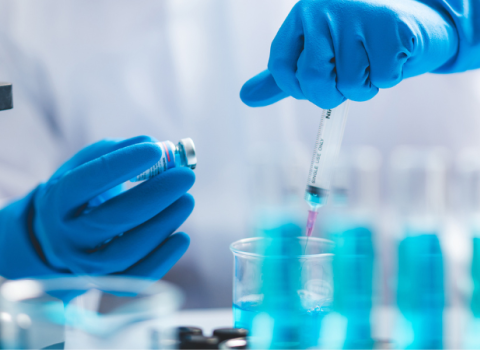Research lead
Researchers from ETH Zurich’s Department of Biosystems Science and Engineering (D-BSSE) have devised a new method for preventing and permanently eradicating the cause of gout. It involves implanting a biological network that regulates the uric acid levels autonomously.
The disease is caused when the level of uric acid in the blood is too high (above 6.8 mg/dl blood) and crystallises out, causing kidney stones and gout. However, uric acid is also an important part of the human detoxification system, acting as a scavenger of free radicals, which cause neurological disorders, brain diseases and tumors.
A team of researchers headed by Martin Fussenegger from ETH Zurich’s D-BSSE in Basle have succeeded in building a network of genes which permanently keep the uric acid concentration in check, and preliminary trials in mice have been encouraging.
In most mammals, the enzyme urate oxydase controls the level of uric acid. Humans however, do not generate this enzyme. The researchers from ETH Zurich set about finding a way to rectify this, and restore the subtle control of the uric acid level.
They have devised a biological network of genes called UREX, in which a uric acid sensor constantly gauges and controls the concentration of uric acid in the blood. If the uric acid level reaches an alarming concentration, the sensor relays the information to a genetic circuit. This prompts the release of a precisely calculated amount of urate oxydase into the blood and the uric acid level is restored to a healthy level.
The genes that comprise the network are integrated in a single cell, and around two million of these cells are then enclosed in a gelatine capsule measuring 0.2 mm in diameter, to protect the cells against an immune response. Pores in the capsule ensure that the cell receives an optimal supply of nutrients, the uric acid level can be gauged by the sensor and the enzyme can find its way into the blood. However, the genes in the network do not come into contact with the host. The implant can be removed safely at any time and without any after effects.
Fussenegger said this is an early example of the application of synthetic biology. “Many medical problems are solved by introducing chemical substances, that is medication, into the body from outside. In our method, we repair a defective metabolic pathway and help the body to treat itself in the best possible way.” He has coined the term molecular prosthesis to describe the device.
The researchers have a patent application and the next steps for its medical application are now in the hands of other partners.





 A unique international forum for public research organisations and companies to connect their external engagement with strategic interests around their R&D system.
A unique international forum for public research organisations and companies to connect their external engagement with strategic interests around their R&D system.